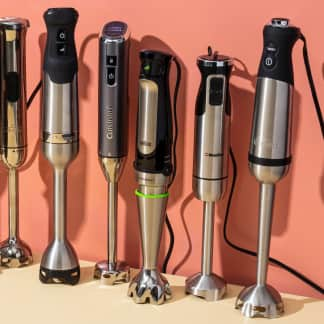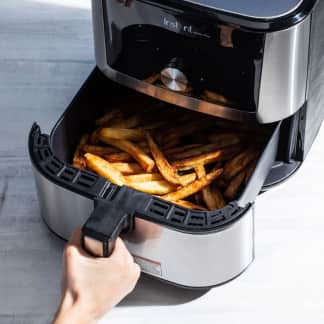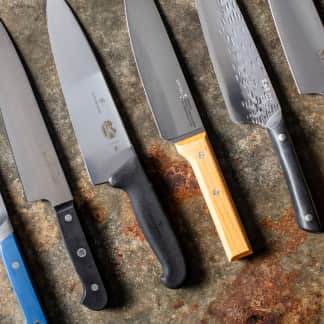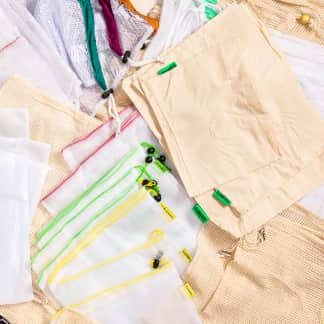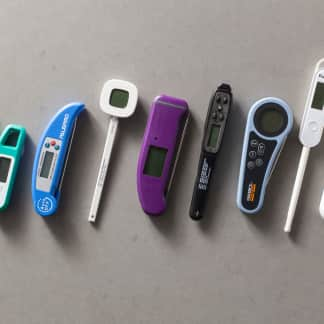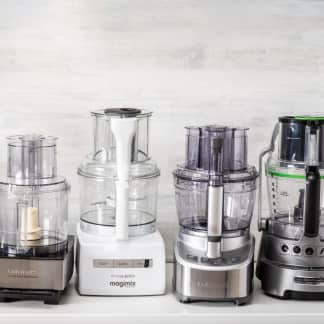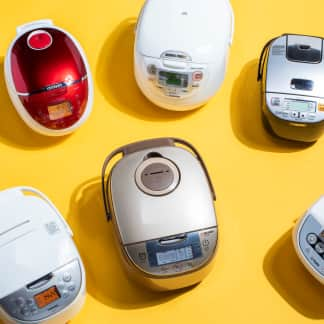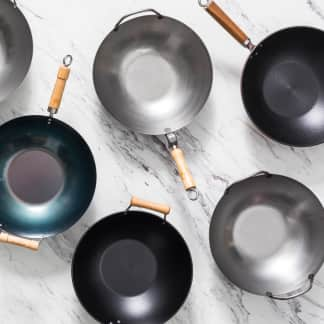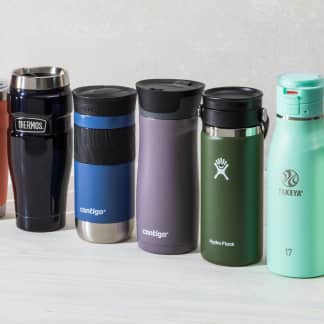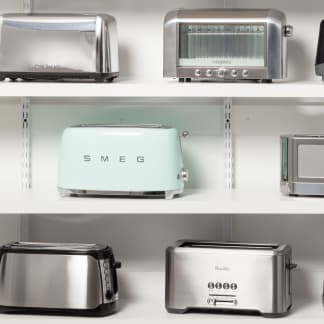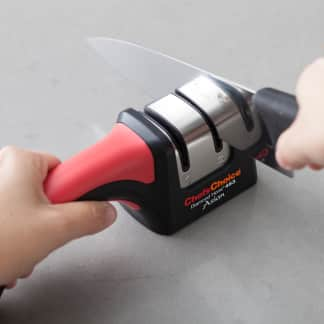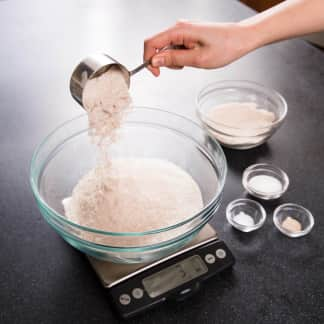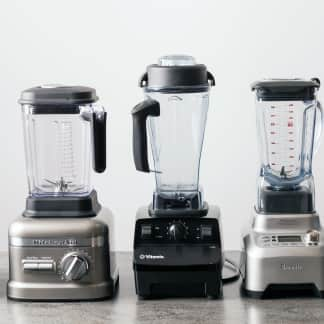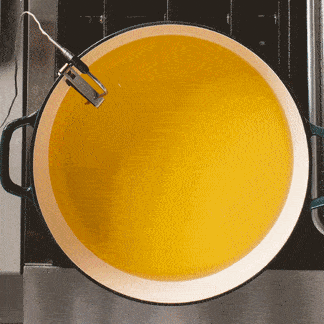When cooking eggs, fish, and other delicate foods that are prone to sticking, we usually use a nonstick skillet. There are two types of nonstick skillets: regular nonstick skillets coated with layers of a synthetic material containing the chemical polytetrafluoroethylene (the most common brand name of which is Teflon) and ceramic nonstick skillets coated with a material derived from sand. Carbon-steel skillets are a third option; in place of a chemical coating, these pans develop nonstick patinas with careful seasoning and use. (Although seasoned cast-iron skillets are also quite slick, they’re much heavier than carbon-steel skillets and not as easy to maneuver as thinner, lighter-weight nonstick skillets.) We’ve tested all three types of pan and can recommend one in every style.
Sign up for the Well-Equipped Cook newsletter
Shop smarter with our ATK Reviews team's expert guides and recommendations.
Regular Nonstick Skillets
The key component in their coatings is polytetrafluoroethylene (PTFE), a tough, flexible compound that scientists at DuPont discovered in the 1930s. When new, the best versions of these pans are superslick and incredibly user-friendly. However, the coatings wear away with use. There are also concerns about the safety of this type of nonstick cookware. Although PTFE is inert (chemically inactive) once it’s made and applied to a product, it can degrade and release dangerous fumes when it’s heated above 500 degrees.
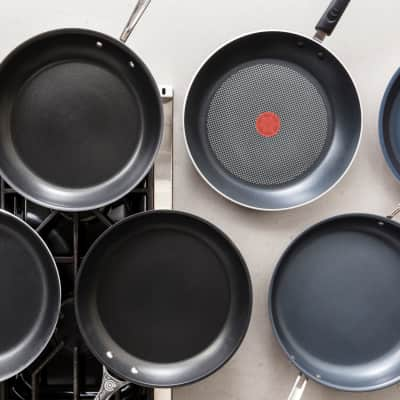
The Best 12-Inch Nonstick Skillets
These pans are wildly popular for a reason. When you have a good one, food never sticks and cleanup is a breeze.
Read Our ReviewCeramic Nonstick Skillets
Instead of PTFE, these skillets get their nonstick properties from a material that’s derived from beach sand. Their nonstick surfaces are more brittle than PTFE nonstick surfaces, which means that they’re prone to developing microscopic cracks that can cause food to stick. But there is no risk of their coatings releasing dangerous fumes, even at high temperatures. Like all nonstick cookware, these pans won’t last forever. They will become gradually less nonstick with use and will eventually need to be replaced.

The Best 12-Inch Ceramic Nonstick Skillets
The ceramic skillets we’ve tested have never been able to compete with regular nonstick cookware. Have they improved?
Read Our ReviewCarbon-Steel Skillets
Unlike regular nonstick and ceramic nonstick skillets, carbon-steel skillets aren’t layered with synthetic coatings. To make them nonstick, they must be seasoned (which is both fairly quick and fairly easy with our preferred method), and this seasoning improves over time with use. Acidic foods and heavy scrubbing with soap can strip off that seasoning, but it can be completely restored if damaged. This style of pan requires time and attention to maintain, but it’s a one-time investment that can last a lifetime.

The Best 12-Inch Carbon-Steel Skillets
What if one pan could do everything the best traditional stainless-steel, cast-iron, and nonstick pans can do—and, in some cases, even do it a little better?
Read Our ReviewWhich skillet is right for you?
We've tested dozens of skillets in each category. Which one—or ones!—you use is a matter of personal preference.| Types of skillets | Types of skillets 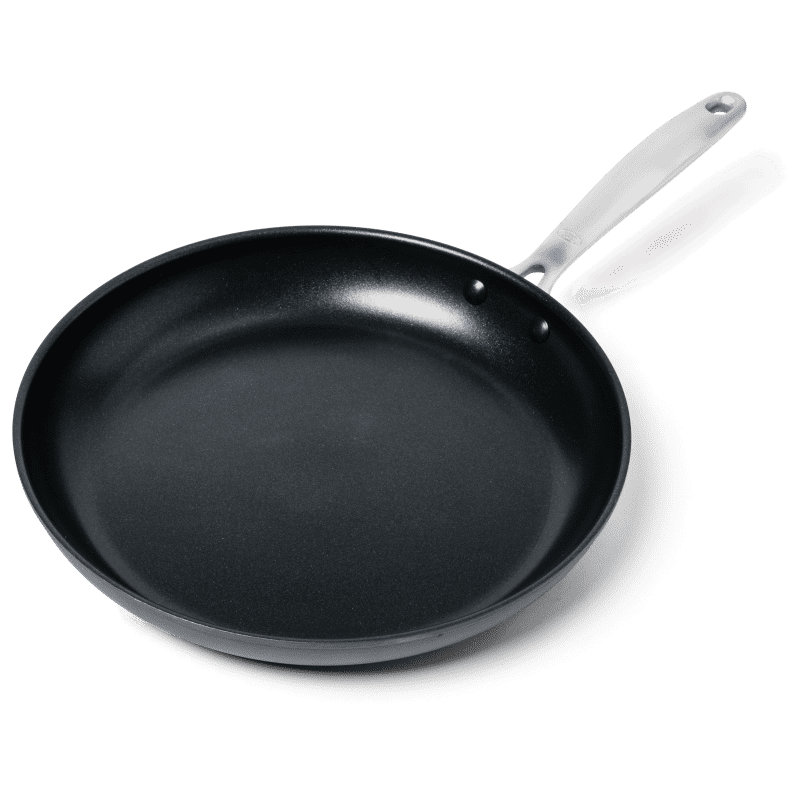 Winner OXO Good Grips Non-Stick Pro 12" Open FrypanBuy Now | Types of skillets  Winner GreenPan Valencia Pro Hard Anodized Nonstick FrypanBuy Now | Types of skillets 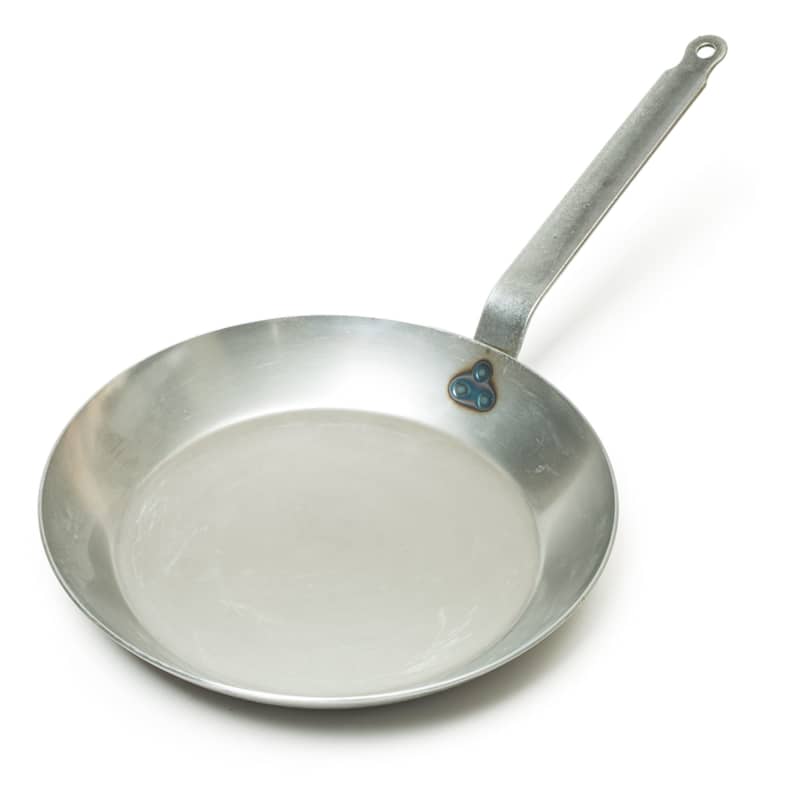 Winner Matfer Bourgeat Black Steel Round Frying Pan, 11 7/8"Buy Now |
|---|---|---|---|
| Chemically coated | Chemically coated Yes (PTFE) | Chemically coated Yes (ceramic) | Chemically coated No (develops nonstick seasoning with use) |
| Does it require initial seasoning? | Does it require initial seasoning? No, but it can be occasionally reseasoned with oil | Does it require initial seasoning? No, but it can be occasionally reseasoned with oil | Does it require initial seasoning? Yes, and it requires occasional reseasoning with oil |
| Maximum ovensafe temperature | Maximum ovensafe temperature Generally between 400 and 500°F but we recommend never exceeding oven temperatures of 450°F to ensure that the coatings do not get hot enough to offgas | Maximum ovensafe temperature Generally between 400 and 600°F | Maximum ovensafe temperature No limit |
| Broiler-safe | Broiler-safe No | Broiler-safe No | Broiler-safe Yes |
| Dishwasher-safe | Dishwasher-safe Yes, but we don't recommend it | Dishwasher-safe Yes, but we don't recommend it | Dishwasher-safe No |
| Weight | Weight About 2.5 to 3.5 lb | Weight About 1.5 to 2.5 lb | Weight About 3.5 to 5.5 lb |
| Heat retention | Heat retention PTFE insulates the pan, so it heats up more slowly | Heat retention Ceramic conducts heat efficiently, so it heats up quickly and stays hot, sometimes requiring extra vigilance on the part of the cook | Heat retention Once preheated, carbon steel heats evenly and retains heat well |
| Durability | Durability Coating will wear away and cannot be replaced | Durability Coating will wear away and cannot be replaced | Durability Skillet will last indefinitely |
| Best for | Best for Those who don't want to season their cookware and who are willing to replace their skillet periodically | Best for Those wary of the potential hazards of PTFE and who are able to follow visual cues and make adjustments to recipes written for traditional nonstick skillets | Best for Those who want to avoid nonstick skillets and don't mind a little maintenance to ensure a lifetime of us |


